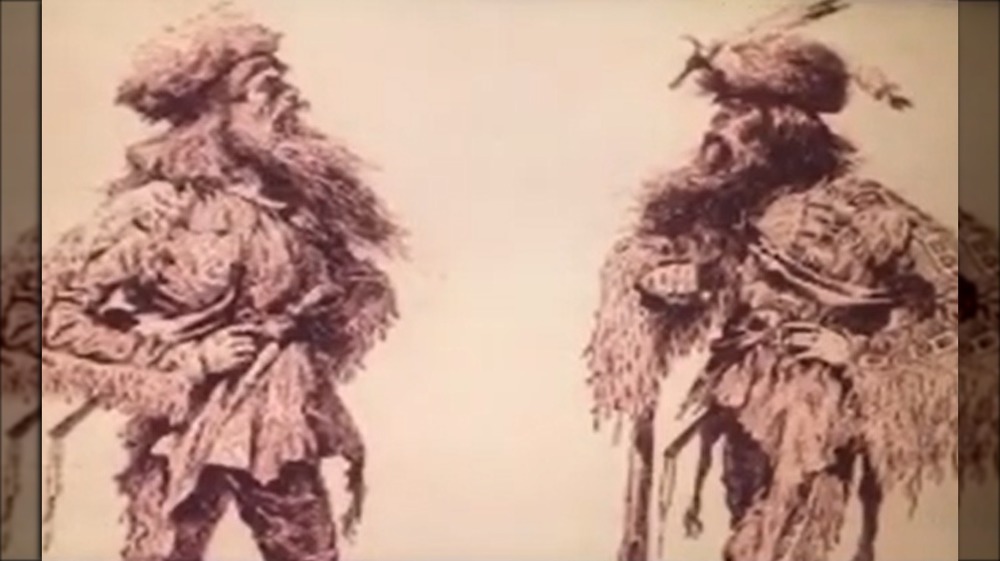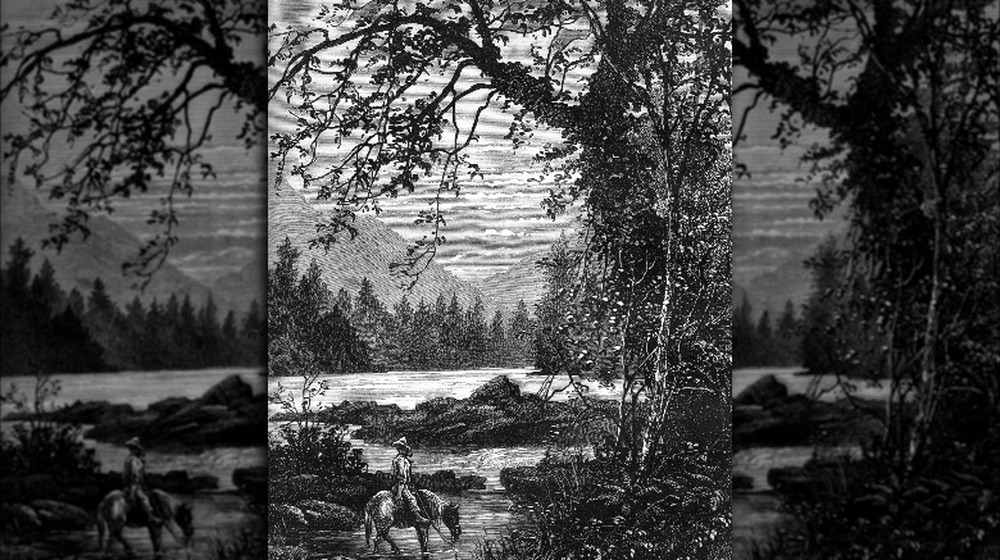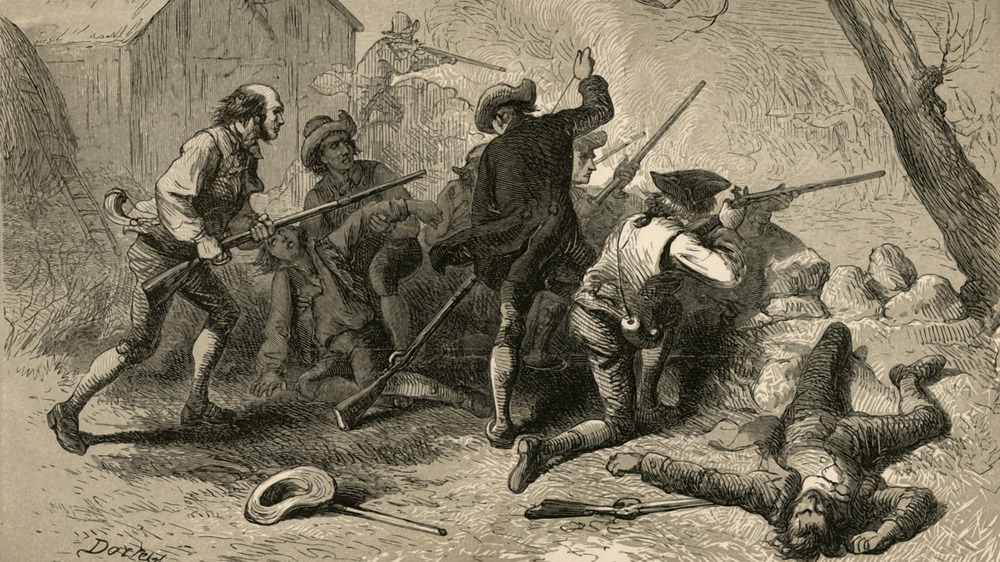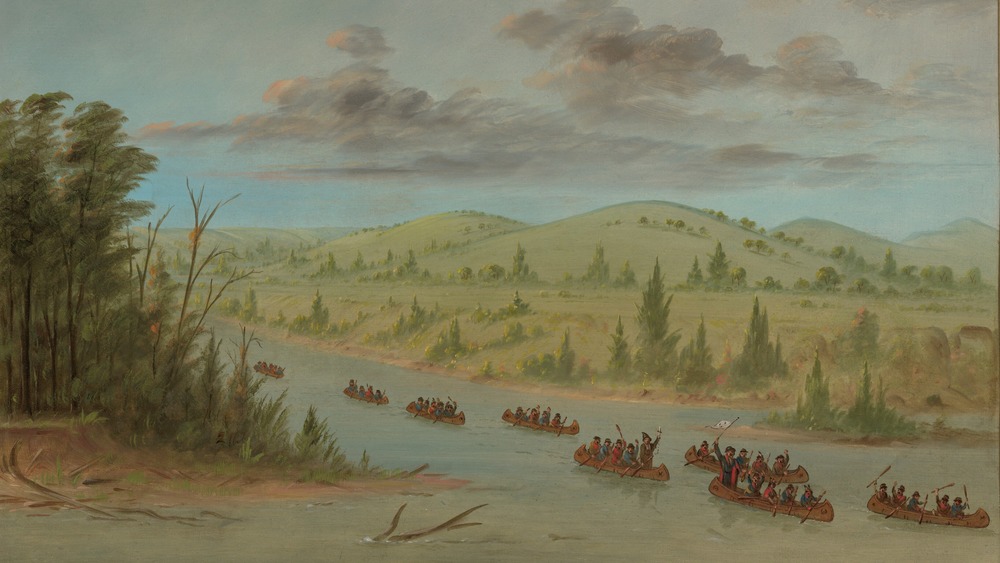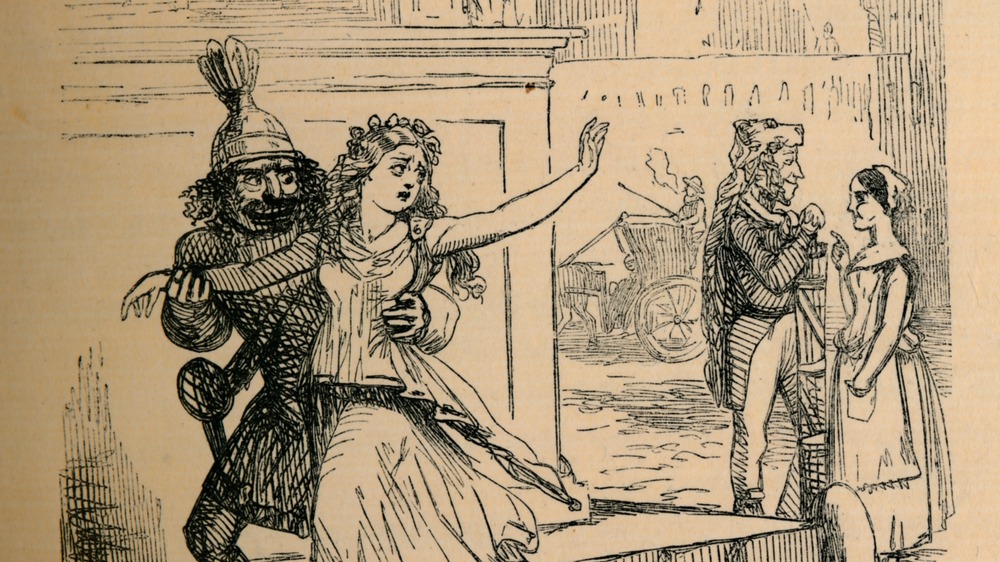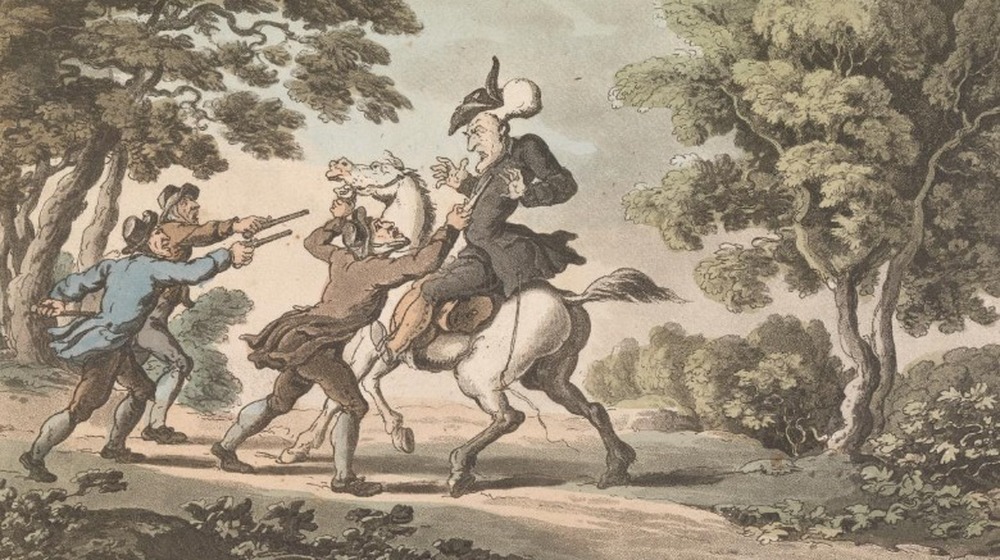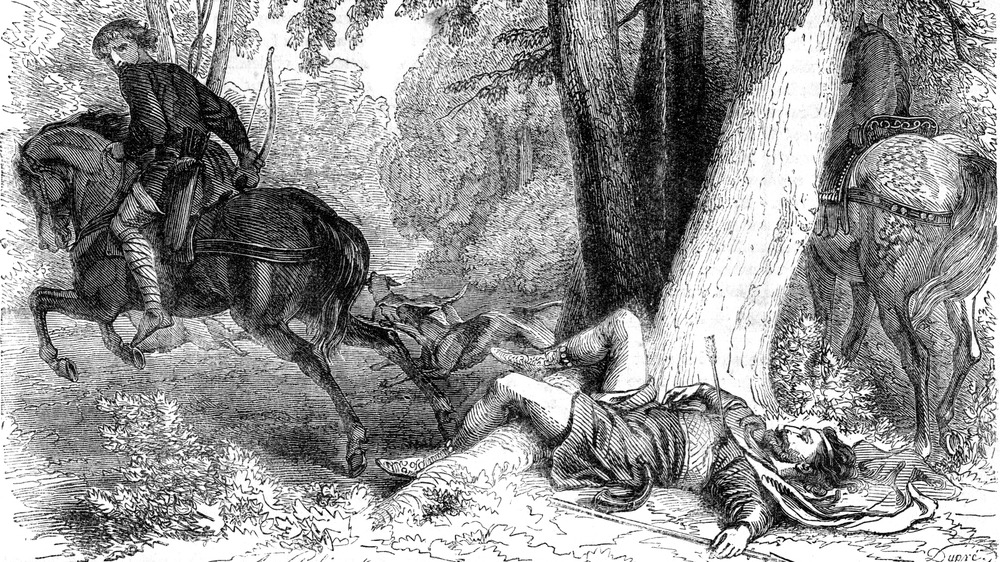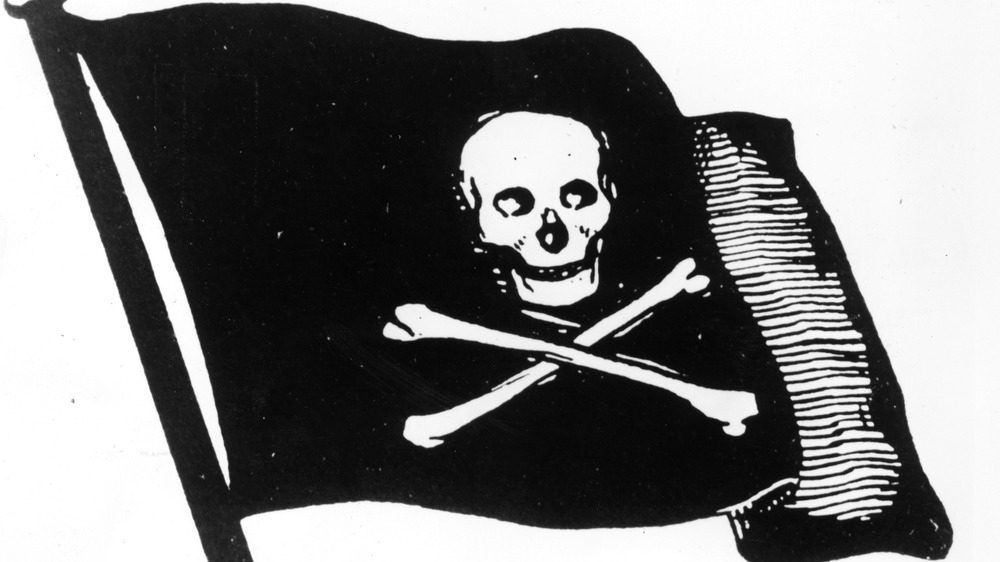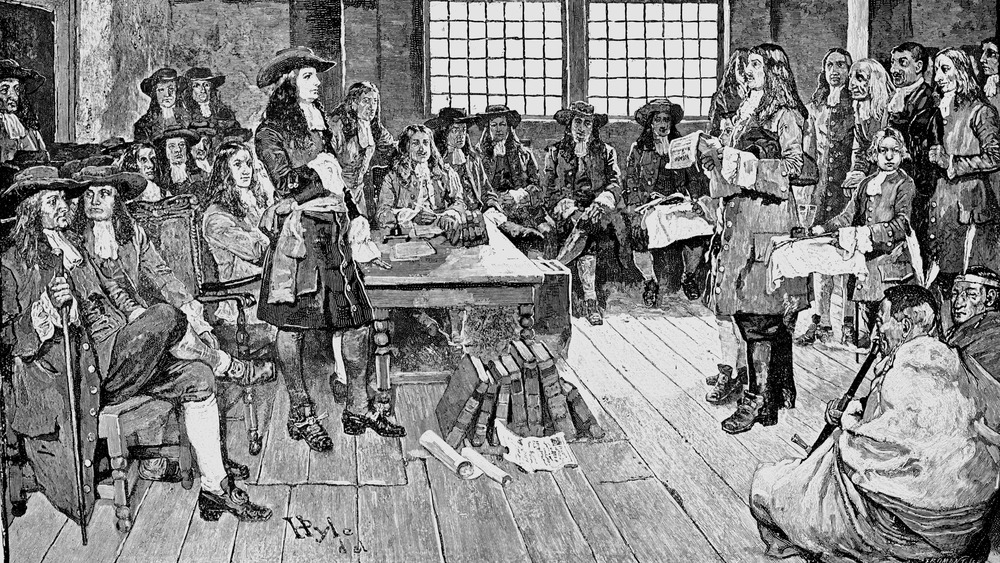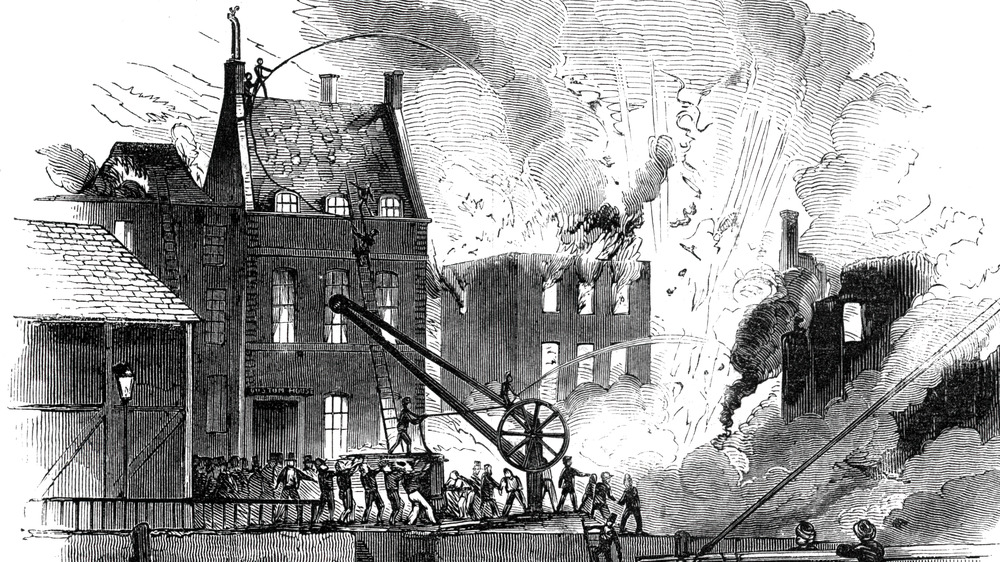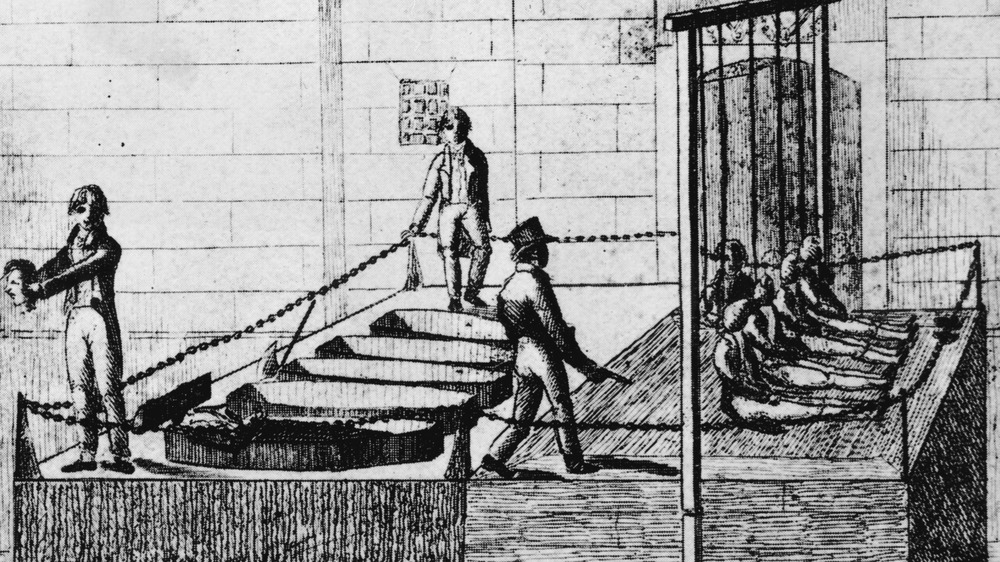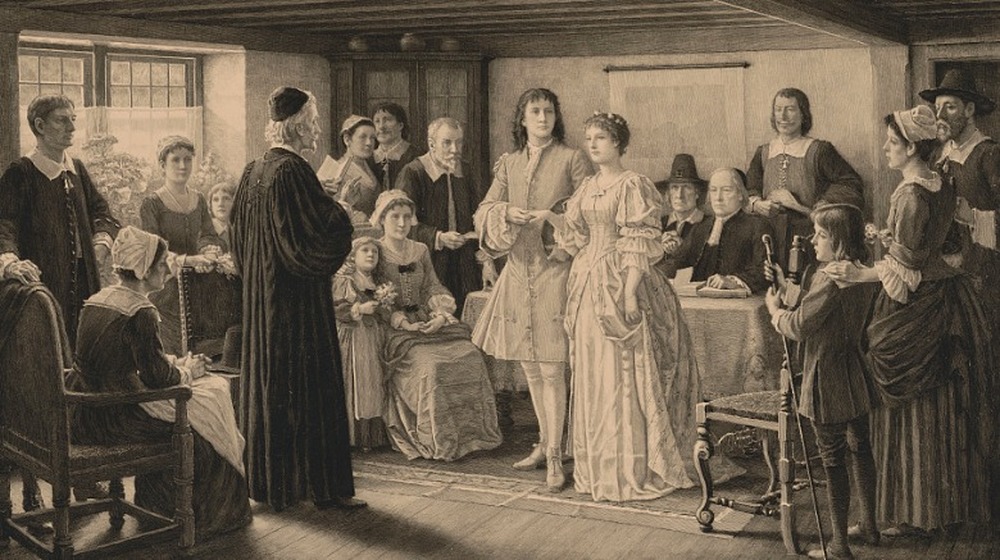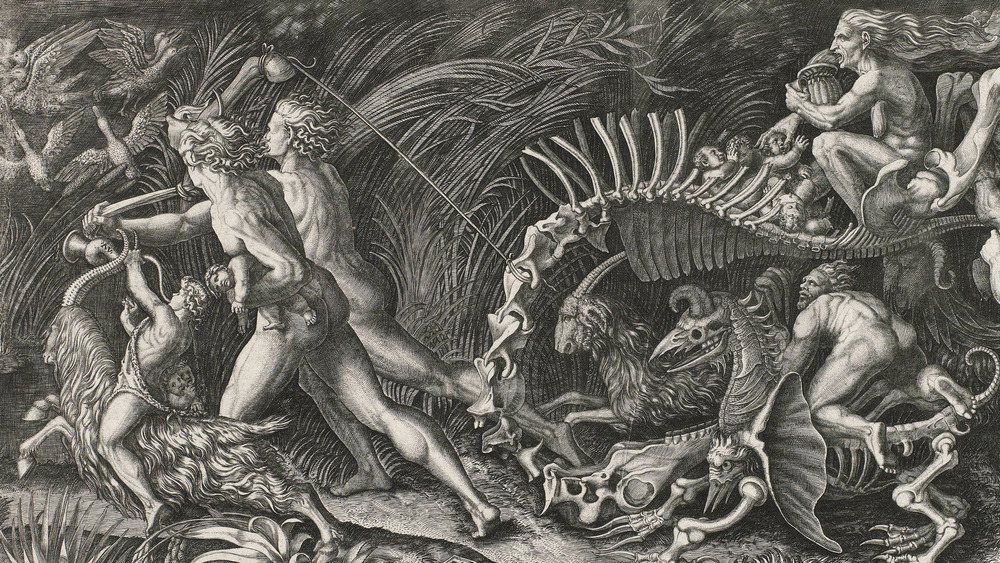The True Story Of America's First Documented Serial Killers
Picture this: it's the late 18th century on the North American continent. The newly formed United States of America has just broken away from Great Britain and won the American Revolution. The young country is in the midst of putting itself together — all of those big events that get talked about in the history books. Right? New beginnings, a bright future, all of that.
But taking off the rose-tinted glasses might reveal some very different goings-on in the barely-formed USA. Far away from all the pomp and circumstance and politics, there was another sort of history being made. A history that has to do with the less-than-legal.
After all, think about it. Crime has been around literally forever; it would've only been a matter of time before America ended up seeing its very first serial killers. That's where the Harpe Brothers come in, rampaging through the frontier at the end of the 1700s. It was terrifying, but it certainly makes the story of America's first serial killers quite the dramatic one.
The Harpe Brothers weren't actually brothers
The story of the Harpe Brothers actually starts out with a little bit of a mystery. Given that they're the first serial killers in the history of an entire nation, it's no surprise they used a lot of aliases in their time, according to Wallace Edwards' America's First Serial Killers: A Biography of the Harpe Brothers.
All those aliases mean their background is a little hazy, but the best historians can tell, they were both born to Scottish immigrants (via Legends of America). Both of their fathers — William and John Harpe — settled down with their wives in Orange County, North Carolina, both couples having a son. Micajah Harpe (whose first name might've actually been Joshua, according to The Scotsman) was born sometime in the 1760s, while William "Wiley" Harpe was born a couple years later.
But, wait, two different fathers? Two different couples? Then...they aren't brothers? Yeah, the answer is no; really, they were probably first cousins. They just grew up around each other and spent a lot of time with each other, so they just pretended to be brothers. And, in all honesty, that seemed to work out, with their nicknames referring to each other. Micajah became known as "Big" while Wiley became "Little" for the obvious reasons. Micajah was muscular and, you know, bigger than Wiley. Hence the nicknames.
The Harpe Brothers served in the American Revolution...kind of
Being born in the British Colonies around the mid-1700s meant that, of course, the story of the Harpes ended up intersecting somehow with the American Revolution. But maybe not in the way that's usually talked about in the history books: young rebels and patriots ready to fight for their ideals. The Harpes weren't really like that. Legends of America says that they left their home around 1775 to look for their future somewhere in Virginia; to get more specific, they wanted to be slave overseers. They didn't seem to have much interest in the Revolution, at least until it interfered with their plans. And when it did, it suffices to say they found a new way to satisfy their interests.
They joined up with the Loyalists (The Scotsman adds that their parents were tortured for their Loyalist leanings) and were seen fighting with the British army on at least a few occasions in 1780. The Battles of Blackstock's Farm and King's Mountain are mentioned by Wallace Edwards, as well as some skirmishes on the borders of the Carolinas.
But the Harpes weren't really into it for any sort of duty or ideology; they were in it for the violence. It's really more accurate to say they joined a Tory gang, which gave them the opportunity to pillage and murder, rape and ruin as they saw fit.
The American frontier was a scary place
So, you know how the wild west is usually described? Lands teeming with lawlessness and danger, outlaws and ruffians roaming all about. Well, that's basically the American frontier.
Sure, the frontier saw its share of legends — Daniel Boone and the like — but there was a darker side, too. Our Public Lands describes the frontier as an outlaw's playground. It was the perfect place for people to escape from the consequences of whatever crimes they had committed, and then go on living life as they wanted to. In general, these more rural areas weren't known for any sort of quick police response, according to Otto Arthur Rothert's The Outlaws of Cave-in-Rock. It was actually agonizingly slow for officials to do anything (more often, citizens had to serve up their own justice) and that worked out perfectly for the less-than-law-abiding types. They did have a lot of leeway to do as they pleased.
And that earned the frontier a reputation — not a very good one. The Raven Report includes an old saying, that "the Devil, old and worn out, had given up traveling and settled in so that he could spend his declining years with like-minded people." Wallace Edwards even described Knoxville as a city where men wandered the streets, swearing and slobbering drunk (at least when they weren't gambling or in the brothels).
The Harpe Brothers kidnapped their wives
The thought that America's first serial killers could be happily married is a little hard to imagine, and frankly, that's entirely understandable. Because, while history talks about the wives of the Harpe Brothers, the truth is, the women were more like their "wives."
Maybe that's a little strange to say, but this all started with Little trying to rape a girl in North Carolina (via Legends of America). That might clear things up. He got shot and wounded by Captain James Wood in the attempt, but the story didn't end there. The brothers were out for revenge, and that came in the form of kidnapping Susan Wood — Captain James Woods' daughter — and Maria Davidson, forcing both of them to become their wives. Later, though, Little somehow managed to marry Sarah Rice, the daughter of a minister, and the other two women both became wives to Big.
But the brothers weren't great husbands (what a surprise). Wood and Davidson were both pregnant before Rice ever entered the picture; both of their children were quickly killed. Then, when all three became pregnant, Rothert said that the brothers hated the children, blaming the women for how they cried. Big actually killed another of the infants, taking it by the heel and bashing its head into a tree, and when a man named Moses Doss dared to be concerned for the safety of the women, the brothers saw to it that he was killed.
The Harpe Brothers' murder spree
By the late 1790s, the Harpes had already taken a number of lives: Moses Doss somewhere around the late 1780s (via Legends of America) and undoubtedly a lot of others during their rampage under the guise of the American Revolution. But 1798 is when their real murder spree took off, lasting into 1799. In that time, they killed a lot of people. The Raven Report says that they ultimately confessed to a total of 39 murders, though it's suspected the true number is closer to 50. Frankly, it's a ridiculous laundry list of names, many of them killed in horrific ways.
On multiple occasions, they would kill random travelers they happened upon, delighting in blood more than money. Thomas Lankford was a former associate, but they murdered him with a tomahawk. They were arrested for that one, only to escape prison shortly after. After that escape, they killed two men they happened upon — Edmonton and Stump — and then killed three campers near the Saline River. A farmer named Bradbury turned up dead, and Rothert mentions a man named John Tully whose body was found under a log. Hudgens and Gilmore just ended up in the wrong place at the wrong time, the Harpe Brothers accusing them of crimes; Gilmore was shot in the head, and Hudgens' brains were beaten out.
Really, that's just a small fraction of the damage they did. There were a lot more victims than that.
Murder wasn't quite enough for the Harpe Brothers
The Harpe Brothers are able to claim the title of America's first serial killers, but most of the time, just murder wasn't enough to satisfy their unquenchable thirst for violence. No, these two needed things to be as bloody and messy as possible. Based on scenes described by Legends of America, one of their favorite things to do might've been to take the dead bodies of their victims, cut them open and disembowel them, only to stuff the cavity with a bunch of stones and throw it in a river. It was the fate that a handful of their victims would meet — Ballard, Trowbridge, and Stump, just to name a few.
But it wasn't the only way they liked to ensure blood. According to Rothert, a young boy named John Trabue happened to run into them; the Harpes didn't just kill him, but also dismembered him, throwing the body parts into a sinkhole. The remains weren't found for weeks. Another time, they happened upon another boy, the son of Chesley Coffey. The boy was out hunting, and the brothers decided to "smear a tree with his brains."
And other times, it was just a violent death. Some of their victims' bodies were found with ax wounds to the head, and others were just left mangled and brutalized on the ground. The Harpes didn't just savor murder, but gruesome violence.
The Harpe Brothers were even too much for pirates
In the midst of the Harpes' murder spree, they headed to an area in Southern Illinois called Cave-In-Rock, hanging out with Samuel Mason's gang — river pirates who terrorized a part of the Ohio River, attacking boats and taking their cargo (via Legends of America).
The Harpes wanted to really make an impression. According to Edwards, in Spring of 1799, a young couple disembarked from one of the boats, heading up onto the cliff to hold hands and enjoy the view. It all seemed perfectly innocent and romantic, at least until the Harpes caught sight of them, sneaking up from behind and pushing them over the edge, laughing as their bodies hit the rocks below. Rothert says that the couple survived, but the brothers were ecstatic anyway; the pirates were less than amused.
But that didn't stop them. A little while later, the pirates had captured and tied up three men, and the brothers had an idea. They took one of the men, stripped him bare and tied him to the back of a horse. They brought that horse to the top of the cliff and blindfolded it, where they hit it with sticks, pushing it forward until it toppled over the edge. The pirates had gone back outside just in time to see the horse and its passenger fall to the rocks near the river. The violence was too much even for them, and the Harpes were promptly kicked out.
The Harpe Brothers were good actors
How exactly did a couple of cold-hearted serial killers manage to somehow avoid the authorities and any kind of retribution for so long? Did they just blend into polite society? Well, they kind of did, actually. There's more than one account of the Harpes seeming strangely cordial. Our Public Lands explains that one of their favorite things to do was to pose as a couple of travelling preachers. They would get themselves into the homes of unsuspecting people, where they would discuss the goings-on regarding the terrible Harpe Brothers.
It's not that far off from what Rothert said they did upon meeting James and Robert Brassel. They pretended to be good civilians riding along the road, asking for news of the Harpes in order to hunt them down. They even went so far as to accuse the Brassels of being the Harpes, and the exchange ended with James Brassel brutally murdered. They pulled the preacher trick with James Tompkins, posing as Methodist preachers to be invited into his house. But it didn't end in Tompkins' death. Instead, it ended with Big saying grace and presenting Tompkins with a fresh supply of black powder after learning he'd recently run out. No death, just deception.
Then, of course, there's also the fact that Little did somehow manage to marry Sarah Rice. Edwards says that he must've been pretty good at feigning innocence and civility to be able to marry a minister's daughter.
The beginning of the end for the Harpe Brothers
The end of the Harpes' reign of terror had to come at some point, and the thing that really led to their downfall came in 1799. They were looking to take shelter in the Stegall house; Our Public Lands guesses that the Harpes were possibly associates of Moses Stegall. At any rate, his wife let them into the house, either not recognizing them as infamous murderers, or knowing them as associates of her husband. There, they became acquainted with Major William Love, another houseguest at the Stegall home (via Legends of America).
But, according to Rothert, the three men were all assigned to the only spare bed in the house, and they killed Love with an ax to the head. Apparently, his snoring annoyed them. And more than that, they blamed Mrs. Stegall for that being the case.
The next morning, they asked her to make them breakfast, which she agreed to, since the brothers said they would take care of her infant son. Unsurprisingly, that was a bad idea. After a while, she noticed that the baby wasn't crying anymore, and when she went to investigate, found her child's throat slashed open with a butcher's knife. Of course, the Harpes ended up killing her too, and then torched the house, leaving the smoldering ruin behind as they made their escape.
The bloody end of the Harpe Brothers
Moses Stegall was infuriated by the death of his family and put together a small group to track down the Harpes. According to Rothert, the group succeeded, following their trail of death, eventually coming upon them on August 24, 1799 (via Legends of America). Little escaped, but Big wasn't as lucky, eventually shot through the leg and fatally through the back.
Big still tried to fight back, shooting his rifle, which misfired (via The Raven Report), then brandishing a tomahawk. But the blood loss got to him eventually, and he admitted to his crimes. The exact sequence of events after that differs, depending on the source. Some say he just died from the wound, others say he died after being shot through the heart. The most gruesome says that Stegall decapitated him while he was still conscious. But regardless, his head was ultimately hanged at a crossroads near Henderson, Kentucky — the intersection became known as Harpe's Head.
And as for Little? He took on a new alias and rejoined the Mason gang. But then when he found out about the reward on the head of Samuel Mason, he just couldn't help himself. He and another pirate killed Mason, bringing his head into town, only for the two of them to be immediately recognized. Little was executed in January 1804, both his head and that of the other outlaw cut off and placed on stakes.
The Harpes' wives were finally free
As for the women, well, their stories ended much happier than that of the two brothers. Rothert implied that, initially, some people might've actually blamed them for the murders committed by the Harpes. Or at the very least, Moses Stegall probably did — authorities took special measures to keep them safe from him up until their trial.
But that wasn't likely the actual view of most of the public. It's generally believed that they were abused by the brothers and were only doing what they could to survive and protect their children (via The Scotsman). They didn't want to be a part of any of this, but they just didn't have much choice. There wasn't much they could do to survive on their own in the frontier while trying to raise infant children (and that wasn't even accounting for the brothers probably hunting them down even if they did escape).
Point being: the public saw them in a sympathetic light, and they were acquitted, allowed to return to normal life. Legends of America says that Rice and Davidson both married decent men and raised large families, while Wood also ended up a perfectly respectable citizen.
The Harpe Brothers and...magic?
Of course this story can't get by without having at least a little bit of weird, supernatural speculation, right? Legends of America says that long ago, there was a group of people — the Hopewells — who were escaping from oppression in Mexico, carrying with them the bones of their ancestors. Their travels eventually led them to an area along what is now the Natchez Trace in Mississippi, where they chose to settle and bury those bones.
Fast forward a few more years, and the legends grew around that spot, which got the name of Witch Dance, because, well, witches were said to gather there at night, performing ceremonies and dancing (via Legends of America). Every place their feet touched, the grasses would wither and die.
Not that Big Harpe cared. At one point, a native guide was showing him the area, and upon mentioning the cursed, dead bits of land, Big just laughed it off, jumping from barren spot to barren spot, taunting the witches and daring them to fight him. Nothing happened at the time, but the story goes that a witch later took Big's decapitated head and ground it up to make a potion. From then on, travelers along the Natchez Trace swore they could hear cackling in the trees near Witch Dance. Creepy stuff.
